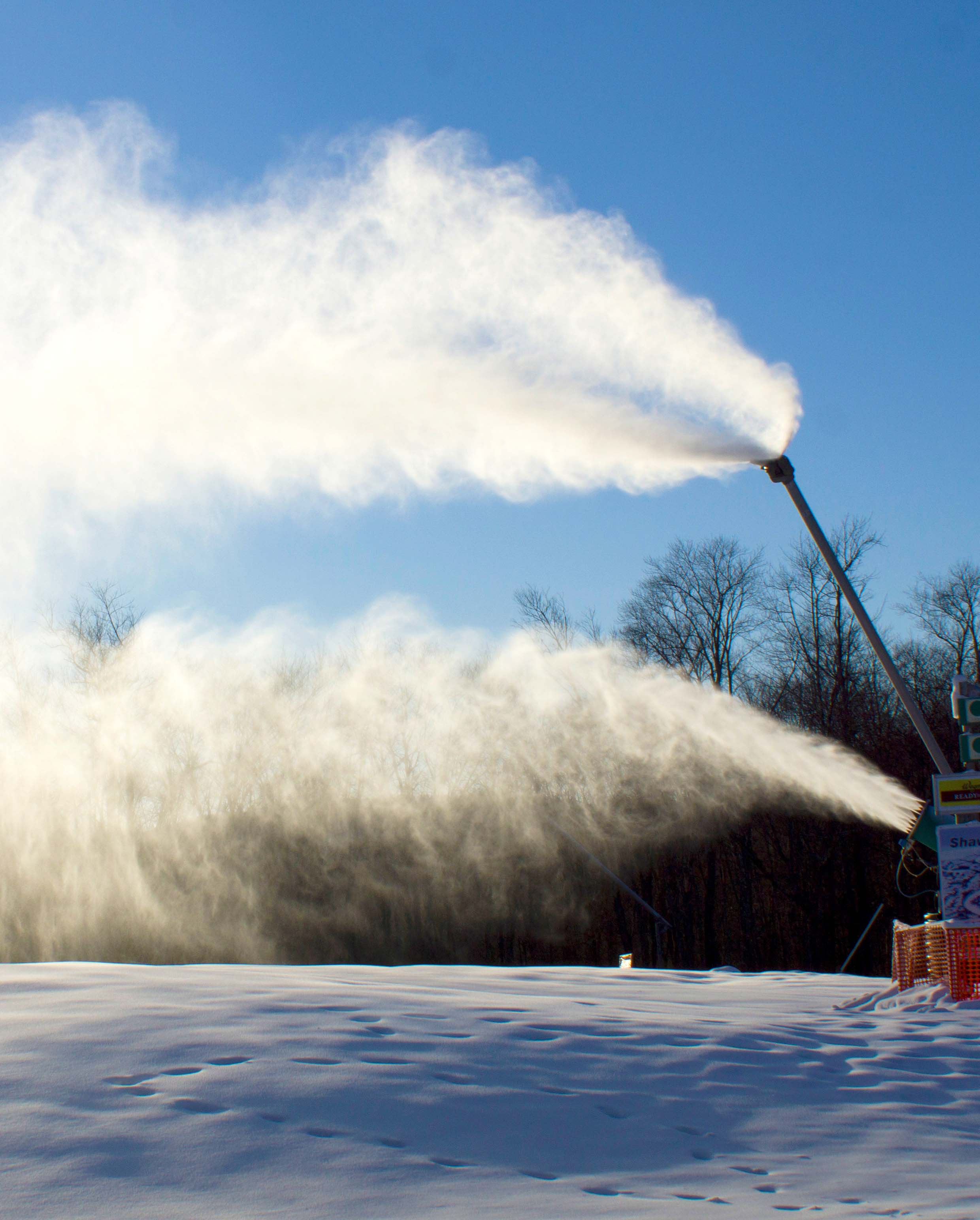In the world of winter sports, the allure of pristine, powdery slopes is an integral component of the skiing and snowboarding experience. However, nature’s whims do not always align with the demands of a bustling ski season.
Enter the fascinating art of snowmaking, a process that transforms ski resorts into winter wonderlands. In this post, we’ll cover the essential role of snowmaking in maintaining our slopes here at Shawnee Mountain, shedding light on the technology and science that allows us to thrive in the face of unpredictable weather.

How do we cover our slopes with snow during the winter months when Mother Nature doesn’t act in our favor?
Snowmaking is a process that we use to create snow when natural snowfall is insufficient or altogether nonexistent. Here’s a simplified explanation of how we make snow:
- Water Source: Shawnee Mountain has a water reservoir — our pond. This is the small body of water that you walk over to enter our base area!
- Air and Water Mixture: Our snowmaking machines use a combination of compressed air and water. Pulling from our pond through a network of pipes, water is sprayed into the air in tiny droplets. We have the ability to make snow on 100% of our trails, with 80% of the mountain being automated.
- Freezing: As the water droplets are released into the cold air, they freeze into tiny ice crystals. The key to this is temperature – we cannot make snow if it’s not cold enough outside for the water to freeze. We also cannot make snow if we don’t have sustainable cold temps, which means we need several hours of below-freezing temperatures to be able to blow snow.
- Snow Quality: The machines can adjust the size of the ice crystals, creating different types of snow. Smaller crystals make a softer, powder-like snow, while larger crystals create a more packed, granular snow. Our automated equipment is also very good at making snow when we have marginal temps, which helps us blow snow as often as possible.
- Distribution: The newly-made snow is then spread over the slopes using our snow cats.
In essence, it’s a process of turning water into tiny ice crystals by spraying it into cold air. This technology allows us to provide a consistent and enjoyable snow experience even when nature doesn’t cooperate.

So what’s the difference between natural snow and man-made snow? Will I be able to tell the difference when I’m out on the slopes?
The primary differences between man-made (artificial) snow and natural snow lie in their formation, structure, and characteristics.
No two snowflakes are alike; natural snow has a diverse range of crystal shapes and sizes, resulting in the unique structure of snowflakes. But because of how it’s formed, man-made snow typically has a more uniform structure, with smaller ice crystals. The size and type of crystals can be adjusted, but man-made snow generally has a different consistency compared to natural snow because of how much control we have over their creation.
Natural snow can vary widely in density and moisture content, leading to different types of snow like powder, packed, or wet snow. Man-made snow tends to be denser and may have a lower moisture content, often resembling packed or granular snow.
We know that die-hard skiers and boarders will always prefer a good, natural snowfall due to its fluffy feel, especially when fresh and untouched. Man-made snow does have its perks, though. A groomed surface of our artificial snow will have a consistent feel, with a firmer or more granular finish from top to bottom. While we always hope for a mid-season blizzard to blanket the slopes in white, our snowmaking equipment will more than make up for its absence while we wait.
Shawnee Mountain Snow Report

Written on: January 6, 2024
Written by: Michaela K., Marketing Asst.









 Pocono Mountains Visitors Bureau
Pocono Mountains Visitors Bureau
 visitPA.com
visitPA.com